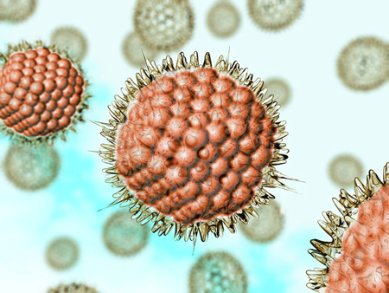Due to their magnetic properties, iron oxide nanoparticles are promising tools for magnetic resonance (MR) imaging. However, to be used as MR contrast agents, they have to reach the target tissues in sufficient numbers.
In order to achieve this goal, Debadyuti Ghosh, Massachusetts Institute of Technology (MIT), USA, and colleagues assembled iron oxide nanoparticles on a modified viral scaffold. They used the proteic coat of M13, a virus which infects bacteria, and introduced in it glutamic acid residues. Thanks to their negative charges, these residues promoted the electrostatic assembly of multiple nanoparticles along the M13 coat’s filamentous structure. Moreover, the team rendered the viral coat able to bind and, thus, target cancer cells. Compared with nanoparticles’ traditional delivery systems, the new approach increased the numbers of iron oxide particles reaching tumor cells and, therefore, amplified the contrast when performing MR imaging of prostate tumors.
- M13-templated magnetic nanoparticles for targeted in vivo imaging of prostate cancer,
D. Ghosh, Y. Lee, S. Thomas, A. G. Kohli, D. S. Yun, A. M. Belcher, K. A. Kelly,
Nat. Nanotechnol. 2012, 7 (10), 677–82.
DOI: 10.1038/nnano.2012.146




